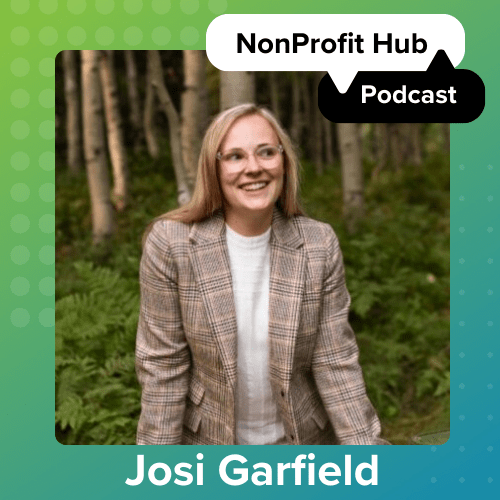While working for various nonprofits throughout the past twenty years, I always had such high aspirations for having our End Of Year (Annual Campaign) strategized by May, planned by August and ready to deliver by October.
It never happened that way. Never. There were always too many other irons in the fire and as a staff member, a campaign launching in six months never took priority.
We all know how hard it is to complete the endless task list for your Annual Campaign in November. You have to collect stories and photos of program participants, get their consent, pull data on your programs, clean up your donor database, plan events, schedule donor meetings, print materials, fix your mail merge and lick a thousand envelopes ― all in one month.
So, why do we all wait till the last minute? Time. It is always about time. This year, I am choosing to look at this pandemic as a gift. Things have slowed dramatically for most of our clients. Programs and events are canceled, people are working at home, and thus staff has the unique opportunity of time.
It might only be May, but it’s truly never too early to start planning for what is going to be an epic end of year fundraising season. If you start building your strategy, I have no doubt that you will be ready to dominate in what will surely be a crowded end of year fundraising space. Here’s what I suggest:
Start with Strategy
Build your overall strategy early by determining your messaging and timeline. You can begin this process by following these steps:
- Audit the previous years’ campaigns. Which messages and designs were compelling to donors, and which aspects can be improved upon?
- Put together a campaign strategy. Choose two or three goals you’d like to achieve and build your strategy from there. Don’t pick more than that. Keep it tight.
- Decide on a campaign theme. What is the story you want to tell for 2020?
- Set an operations calendar. Determine important deadlines now and stick to them.
- Develop content. What content is needed to make this campaign successful: newsletters, testimonials, etc.?
Organize your Data
Your campaign is only as strong as your data, so review your donor database now. Is your data up to date and tagged correctly? Do you have current addresses for your contacts? Make sure names are free of grammatical errors (such as all lowercase or uppercase letters), so you can properly personalize and address your communications.
You’ll also want to segment your data if you haven’t yet, and update the tags for each contact. Possible segments might include: volunteers, board members, major donors, other donors and corporate contacts. This will allow you to target specific groups with relevant messaging.
Audit your Website
What is your website’s user experience? Is your website set up to effectively accept donations and find important information on your organization? Think about how many pages people need to click through in order to find your mission, learn about volunteer opportunities, or make a donation. If it takes too many clicks to find this information, you may lose potential donors along the way. Make it easy for them!
Collect and Build Your Content
There are a variety of content pieces you’ll need for a successful annual campaign. Begin to brainstorm what you’ll need to collect in order to build each piece.
Case Statements
Develop two or three case statements that include compelling stories of the work being done coupled with evidence of the societal benefits and the efficient stewardship of donor resources. These case statements will be provided as resources for board members, staff, friends and others who are interested in generating support for your work.
Website
Begin to update your website content to reflect current stories, current trends and a new call-to-action. Start writing weekly or monthly blog posts to generate fresh content. You can even task volunteers, board members or corporate sponsors to guest write posts. Beginning in September, your website should start to reflect your annual campaign “theme” and messaging.
Prepare for Campaign Execution
Social Media
We recommend building a content calendar that outlines which messages you want to communicate on each day leading up to your annual campaign. Start thinking about other ways to expand your social media presence, such as working with influencers. Are there any influencers or celebrities that may be interested in supporting your target population? Reach out now and see if they are willing to educate their audience on your mission. Would paid advertisements make sense for your organization? Try testing small amounts, even as low as $50.
Community Engagement
Start planning for community engagement activities, such as small, in-person events, virtual events, or crowdfunding campaigns. Determine the timeline and resources needed for each event so you have enough time to secure a host or speakers, prepare and send invitations, and design collateral for your attendees.
Direct Mail
Determine which segments will receive direct mail pieces, and how those pieces should differentiate. For example, you may want to include a handwritten note for major donors. Begin to imagine the design of your mailer, and understand what messaging and photographs you’ll need in order to make your vision a reality.
Public Relations
What story will the press want to hear? Build the narrative now by collecting stories, quotes and examples of success. Identify news sources and blogs (both local and national) that may be interested in your story, and build a contact list of reporters from those organizations. You’ll then be ready to pitch your story in conjunction with launching your annual campaign.
Don’t Forget to Thank Your Donors!
Plan your “thank you” process now as well. Can your “thank you” messages be automated? How will each donor be thanked? Consider email, handwritten notes, and phone calls. The “thank you” process may be different based on the donor’s monetary donation size. Determine the timeframe you’d like to send “thank you’s” within, and create a plan around it. You can build your email templates and draft your call scripts now so that you can thank donors in a timely manner.






